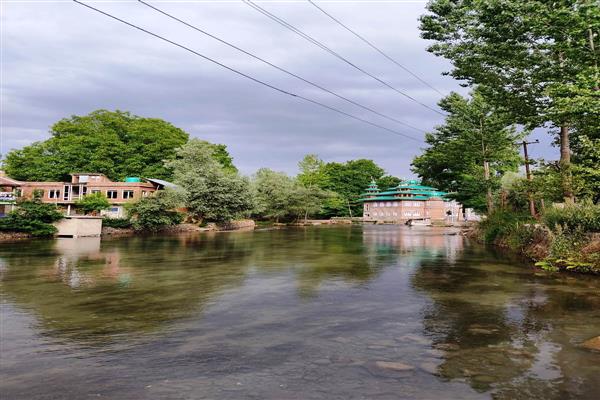Kashmir Magazine By : Kashmir Magazine | Srinagar, Publish Date: Wednesday, May 15, 2024 3:07:57 PM | Updated Date : Wednesday, May 15, 2024 3:07:57 PM

Younus Rashid
In the gateway of the Kashmir town - Qazigund, a spring that captures the attention of locals on festive days but falls short of visitors for the rest of the calendar year requires official attention. The spring, known as Nag, and its natural beauty have no parallel in the town. The village’s name has also been derived from this “act of God.” The crystal-clear water not only quenches the thirst of 50 villages but also irrigates the surrounding land.
Panzath Nag, located just a 3-minute drive from the main town of Qazigund, serves as a serene destination for both tourists and locals. It stands as the first tourist spot upon entering Kashmir through the new Qazigund - Banihal tunnel. The name Panzath is a transformed version of “Paanch Haath,” meaning five hundred, derived from the numerous mythical springs in the area. Significantly, the name “Panzath” finds mention in the ancient chronicle “Rajtarangrani” by Kalhana (1148), a book of authentic sources, referencing this spring (Pancahasta) in the Pargana (revenue unit) of Devsar.
“The 500 springs lie within a distance of 1 to 1.5 kilometres, starting from Satrashi, a locally called name, to Nagbal Nag. The last spring is at Zirayat Sheikh Aftab Sb. The depth of this spring is unknown, as nobody has measured it so far; it remains a mystery,” according to Abdul Salam Wani, the local Auqaf Committee member. The water flows from Satrashi, and upon reaching the Nagbal spring, it takes the shape of a river called Panzath Nag, as explained by Wani.
Though nobody has counted the springs so far, it provides more water than any spring in Kashmir, he said. The Kashmiri and Trout fish are visible in the spring, and there is no artificial interference. The current status of the spring is that it lacks anything to attract people, and its banks are polluted, Wani added.
Panzath Nag Springs as the Lifeline for Two Dozen Villages:
The Jal Shakti department is equipped to supply water from the Panzath spring to around two dozen hamlets in Qazigund town. The villages include Vessu, Damjan, Sangran, Nussu, Badragund, Bonigam, Yarhole, Babapora, Nawa, Drinen, Panzath, and Wanpora. Additionally, water is supplied to the Migrant colony Vessu. The Jal Shakti Qazigund official mentioned, “We supply around 6.72 million litres of drinking water to these villages per day.” The department constructed a dam some years ago to ensure uninterrupted drinking water supply to these villages, he added.
Irrigating the Fields: Vital Water Source for Agricultural Lands:
It serves as the water source for agricultural purposes for around 50 villages. The rural areas predominantly rely on agricultural practices, and this spring proves to be a boon for them. Hundreds of hectares of land have their origin spring in Panzath Nag. Umaisar Gull, a local, emphasizes, “In case we continue to pollute this spring, we will lose all hopes of drinking water as well as irrigation for the land.” Through various canals from Nag, we irrigate the land and quench our thirst. Its preservation is equally crucial. “We must take it seriously and ensure we don’t lose the spring too,” Umaisar said.
Thriving Fisheries Hatchery on the Banks of Panzath Nag:
On the bank of the spring is a wonderful hatchery established by the J&K Fisheries Department. The hatchery is renowned for Rainbow Trout production, and it also facilitates the sale and rearing of fish. The hatching farm not only attracts people but also enhances the natural beauty of the resort - Panzath Nag.
Ghulam Ahmad, a shopkeeper situated on the bank of the spring, expressed that promoting this place through government initiatives at the earliest would significantly enhance our livelihoods and local businesses. He envisions Panzath Nag becoming a new tourist destination comparable to Verinag or any other resort. Ahmad believes that with timely government support, the potential of this area could be fully realized, bringing economic benefits to the local community and establishing Panzath Nag as a sought-after tourist spot.
(The write-up has been reproduced with author’s proper permission)